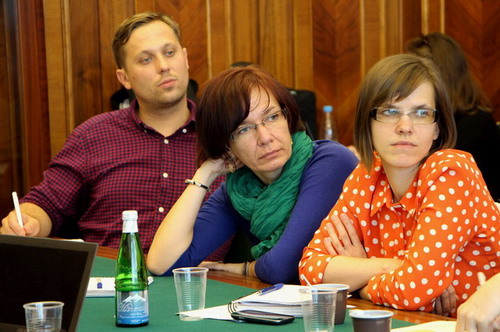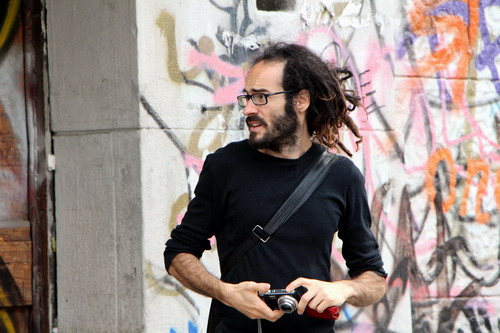Street Art in Changing City: Theoretical Perspectives

PROGRAM
ABSTRACTS
INTERVIEWS: Luke Dickens / Andrea Brighenti / Natalia Samutina
FEEDBACK
VIDEO
The first conference in Russia devoted solely to street art and graffiti research took place in Higher School of Economics on June 7-8 2013. The event, titled “Street Art in Changing City: Theoretical Perspectives”, was organized by our research group with support of the Poletayev Institute for Theoretical and Historical Studies in the Humanities (IGITI).
The conference pursued two main goals. Firstly, since both Russian and foreign speakers took part in the conference, we had the chance to explore and compare cases of different cities: Moscow, Saint-Petersburg, Yekaterinburg, London and Trento. It also became a great opportunity to internationalize our activity and discuss results of the group’s research that we have been working on in the last one and a half year. There were lots of thought-provoking and helpful questions, comments and suggestions. Having presented our ideas and findings during the conference, it is now possible to develop them and express them in a form of published papers in the near future.

Secondly, the conference was a call for broader discussion of theoretical and methodological foundations of urban phenomena research. Focusing on graffiti and street art, participants revised a number of approaches and concepts in urban studies, such as place value, political movements and political action, reappropriation of space, new media, critical theory, creativity and others. Limitations, alternatives and advantages of these concepts and frameworks were examined.
Two authors of well-known works on street art were invited to be keynote speakers. Luke Dickens is a cultural geographer from the Open University (UK). His talk was focused on the notion of “brandalism” and how it transformed strategies of street artists. Andrea Brighenti, a sociologist from the University of Trento (Italy), presented a paper proposing an approach to investigation of how objects and environments are interconnected and how place value changes.

Other presentations’ subjects may be divided into three categories. The first category was devoted to specific aspects of street art in the contemporary city. Speakers investigated topics of art projects in abandoned cities (Ekaterina Riise), graffiti in the context of political protest in recent Russian history (Roman Abramov), commemoration practices and temporal dimension of street art (Oksana Zaporozhets, Boris Stepanov and Natalia Samutina). Second category embraced research of reception of graffiti and street art. It appeared a complex and important issue and was frequently touched upon during presentations and discussions. Elena Trubina focused on the projects where street and public art was used to provoke reactions of citizens: Alisa Maximova suggested cultural anthropological notion of liminality to describe ambiguous position of street art; Varvara Kobyshcha analyzed how different strategies of “normalization” are employed to cope with disturbing experience of encounter with graffiti objects. The last category of papers was devoted to theoretical and empirical work with urban phenomena close to street art. Anna Zhelnina presented preliminary results of research of creative practices in Saint-Petersburg, Petr Ivanov analyzed DIY advertisements in the context of shadow economy, Evgeniy Terentev proposed discursive analysis of the city and illustrated this approach on the example of toponymy, and Ekaterina Lapina-Kratasyuk argued about applicability of media theories in the field of urban studies.

Thanks to speakers and participants of discussions, the conference was a challenging, fruitful and inspiring experience. Hopefully it will give rise to further meetings and discussions of street art studies in Russia as well as facilitate integration of Russian scholars in the international network of researchers in this field.